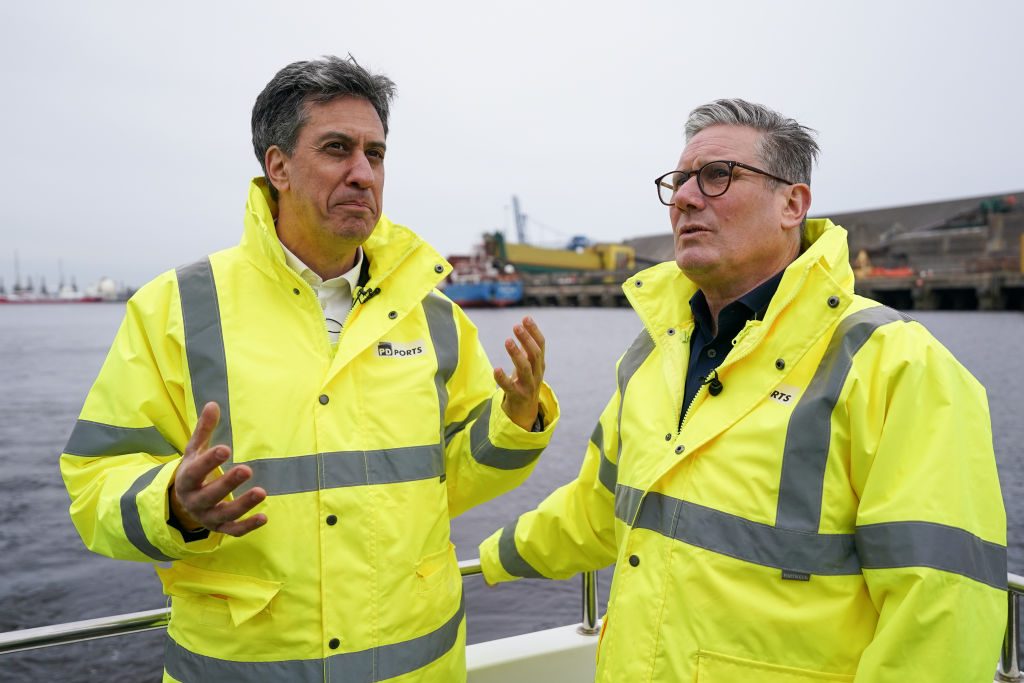Prime Minister Keir Starmer and Energy Secretary Ed Miliband maintain that their decision to commit a further £14 billion to Sizewell C, a new nuclear power station in Suffolk, does not represent a “blank cheque” from the taxpayer. Yet the evidence suggests this may be overly optimistic.
For a government that wants to achieve a Net Zero energy system by 2050, the attractions of Sizewell C are obvious. Unlike intermittent renewables, which are dependent on the weather, nuclear plants — in theory, at least — provide stable and reliable low carbon power. However, most of Britain’s existing nuclear fleet is ageing fast and, despite repeated extensions of its operating licences, will be offline by 2030. Meanwhile, back in 2020 the Office for Nuclear Regulation (ONR) granted a licence to build and operate two reactors at Sizewell with a total capacity of 3.2 gigawatts — enough to power some 6 million homes.
Sizewell’s licence was granted on the basis that the new plant would be largely identical to Hinckley Point C, another two-reactor plant which is still being built by EDF in Gloucestershire. Though this was originally supposed to be supplying power to the grid by now, current projections suggest such an outcome is unlikely before 2031. When construction started in 2017, EDF said it would cost £18 billion at 2015 prices. Last year, following several earlier increases, the firm revised this figure to £34 billion at 2015 prices — or £46 billion now. Most energy experts consider it unlikely that Sizewell C will end up costing much less.
The operational record of the European Pressurised Reactor (EPR) design of the Sizewell and Hinckley Point plants is no happier. In 2021, the world’s first EPR to come online, Taishan 1 in China, had to be shut down for more than a year because unexpected vibrations had damaged its fuel rods. The same problem has afflicted the EPR at Flamanville in France, which has also experienced shutdowns. Other expensive technical issues there mean that EDF has decided to concentrate in future on selling a very different new design known as the EPR2.
However, the organisation can’t do that at Sizewell C because this would not comply with the terms of the ONR licence. Seeking approval for a British EPR2 would mean repeating the entire regulatory process, which would take several years.
This isn’t the only questionable feature of the Government’s decision. While EDF has clearly struggled to build nuclear plants on budget and on time, its Korean rival Kepco has to date built eight of its Advance Power Reactor (APR) 1400 plants without significant overruns. In 2023, Kepco submitted a bid to Turkey to build four reactors for a total cost of around £26 billion. On that basis, building two at Sizewell might be expected to cost £13 billion, less than a third of the likely cost of the EPRs.
What’s more, the APR 1400 has already been approved by the US Nuclear Regulatory Commission and by the European Union: its safety standards are no less stringent than those of Britain’s ONR.
“It would make an awful lot of sense if we junked the EPR and just went for Kepco,” independent energy consultant Kathryn Porter says. “If the APR is good enough for Europe and America, it’s good enough for us — and unlike the Americans, we don’t have to worry about hurricanes and tornadoes. We could literally just pass a law saying we’re going to build APR 1400s at Sizewell. And because they’re so much cheaper, they would attract investment — and make a profit.” Other sites where old reactors have already closed or are due to do so, such as Wylfa on Anglesey, would also be suitable, Porter says.
Starmer and Miliband claim that throwing another £14 billion at Sizewell C shows we are entering a new “golden age” of nuclear investment. Some may feel that opting for a technology known to be fraught with problems, and prone to vast increases in construction costs, is a peculiar way to go about this mission.











Join the discussion
Join like minded readers that support our journalism by becoming a paid subscriber
To join the discussion in the comments, become a paid subscriber.
Join like minded readers that support our journalism, read unlimited articles and enjoy other subscriber-only benefits.
Subscribe